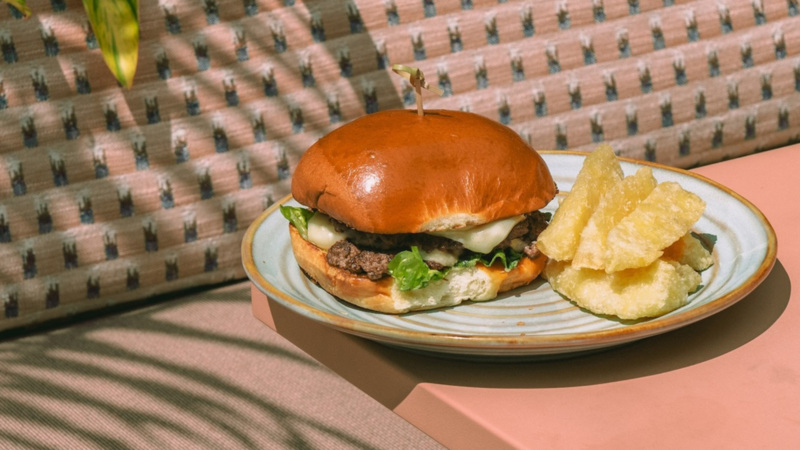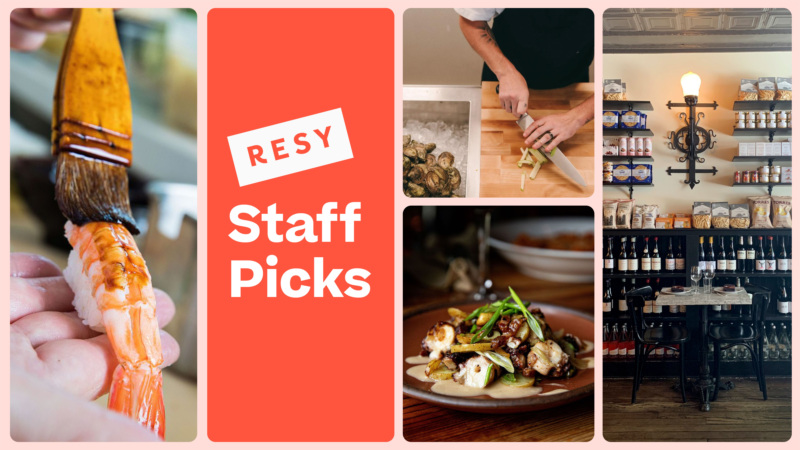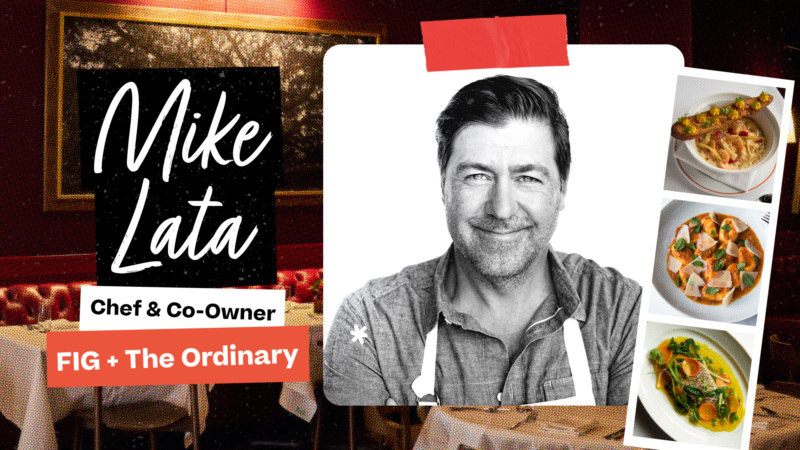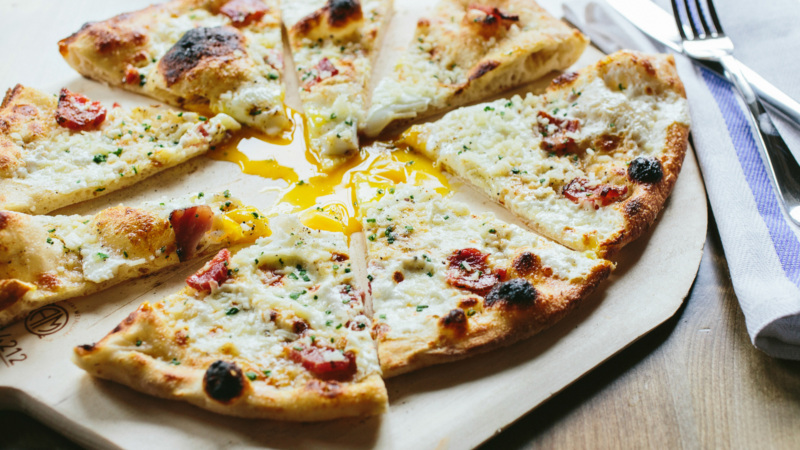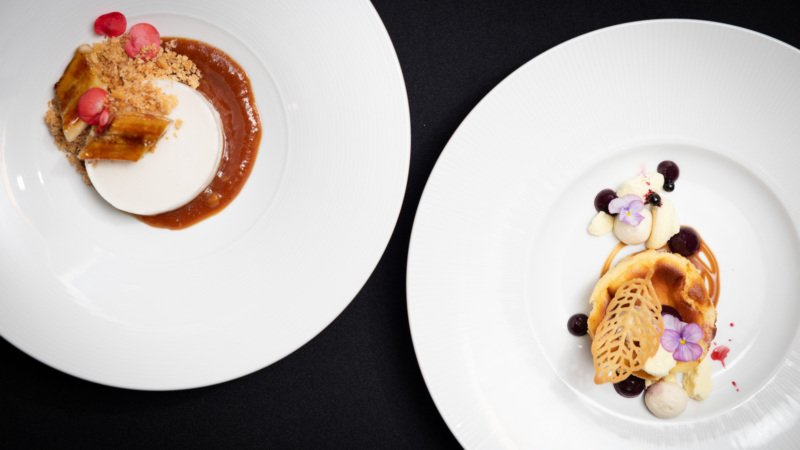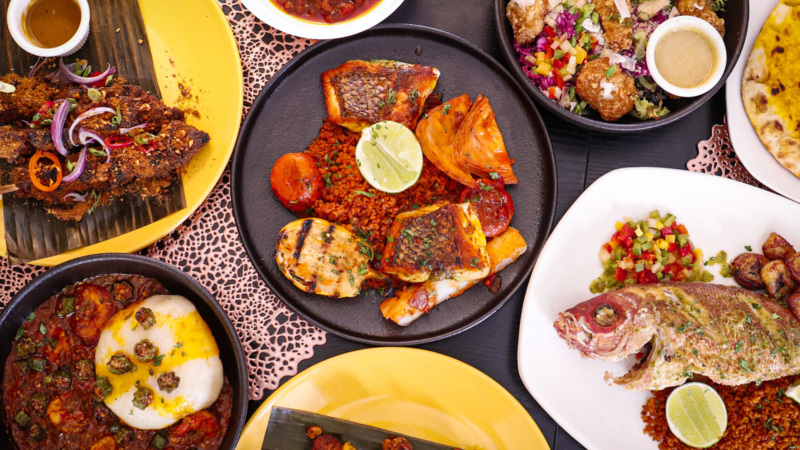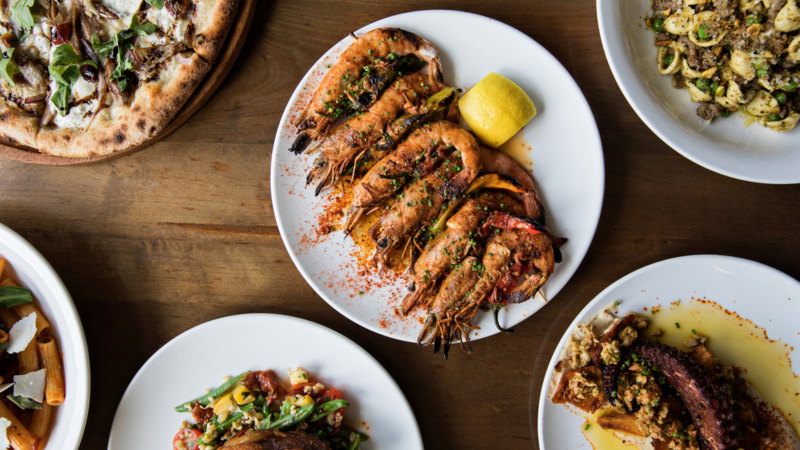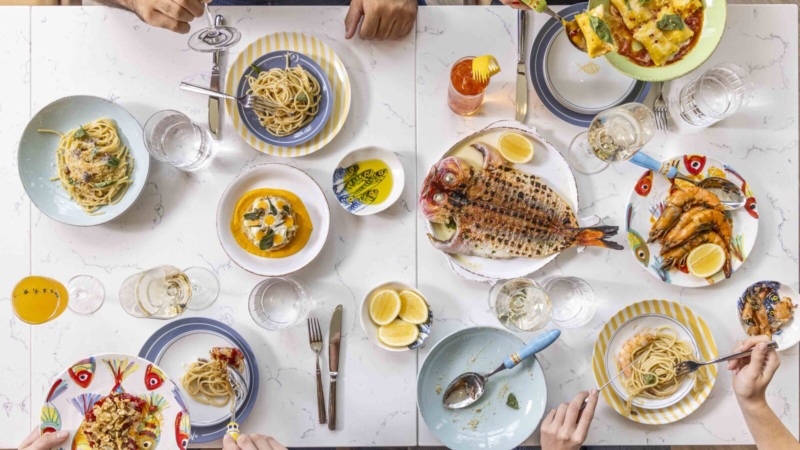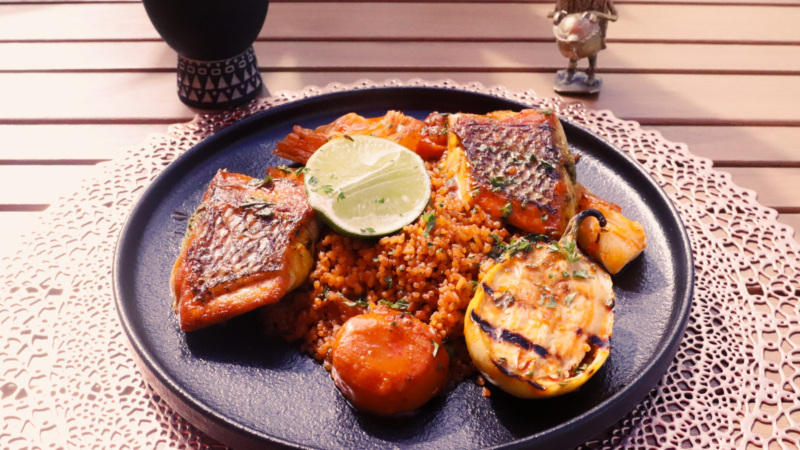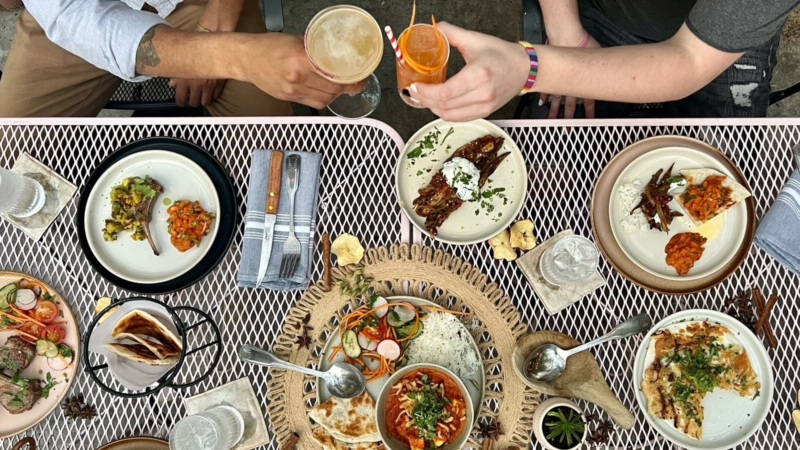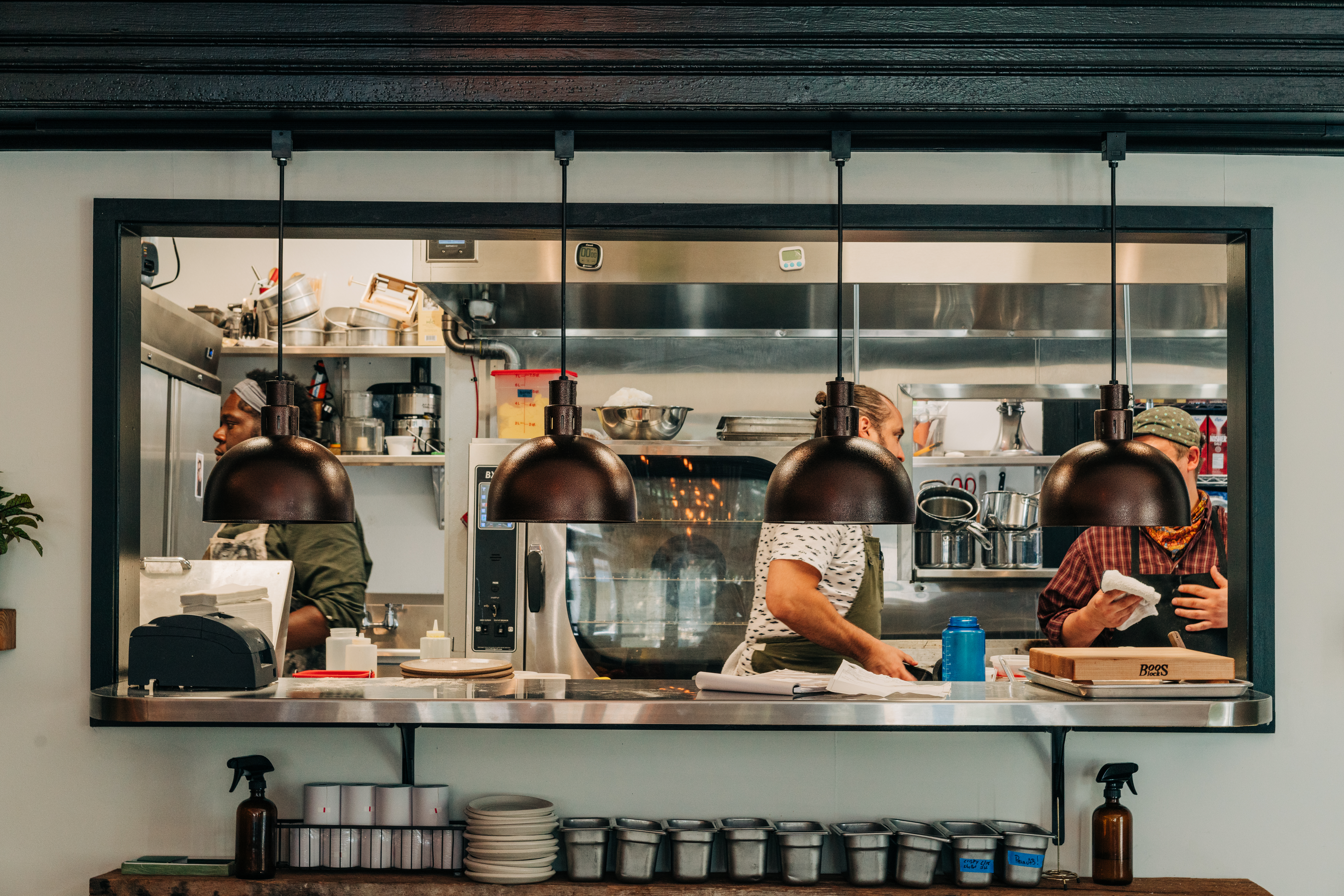
Four Things to Know About Chasing Sage, Now Open in Downtown Charleston
Before you go to a new restaurant, what do you want — or need — to know most? In our series The Rundown, we’re sharing all the essentials about some of the latest Resy restaurants.
This week, we’re taking a look at , located in the Cannonborough-Elliotborough neighborhood of Downtown Charleston, and which just officially opened after a series of successful globally inspired pop-ups over the past year. Here’s everything you need to know.
1. A focus on the family farm informs the dishes.
In addition to locally-sourced produce, seafood, and meats, many of the menu ingredients are sourced from owner Cindy Edward’s family farm in Smoaks, South Carolina. Seasonal ingredients are a key part of the ever-evolving menu of curated small plates, priced from $9 to $19. The small plate approach allows you to create your own experience, meaning that it may be different every time you visit.
The focus on bright, fresh ingredients is notable throughout the menu, and makes even simple plates like the Heirloom Tomato Tart with fresh ricotta and garden herbs and Sweet Corn Cavatelli feel special.
In addition, the coffee program nods to the Pacific Northwest, from where the team originally hails. Look for Seattle-based Herkimer Coffee for the French Press on the menu, while the espresso is brewed from beans roasted by Seattle’s Fonté Coffee.

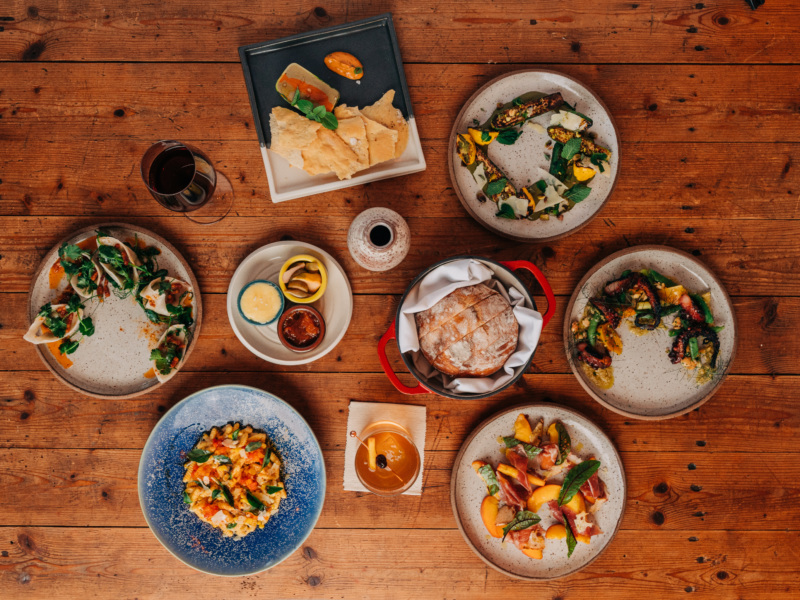
2. A two-chef kitchen means a more flexible menu.
Walking into the cozy dining area Chasing Sage, you’ll notice the two-chef kitchen concept, with an open window into the main kitchen and a second chef station situated toward the back of the dining room. This may seem unusual for a relatively small restaurant — Chasing Sage has fewer than 60 seats — but it allows for the team to have the flexibility and creativity to continuously evolve the menu based on what’s available. “It’s really, really worthwhile for us, because one of us can keep an eye on the kitchen counters while the other can break off to see what may have just come in from the farm,” says Chef Forrest Brunton.
To the left and right of the station, you’ll also see containers of fresh herbs grown on the property, allowing for the chefs to often include ingredients that are harvested just moments before they arrive on your table.
The open-window concept also enables a level of interaction between the chefs and guests that’s not often seen in restaurants. The goal from the team was to make the entire dining experience feel like an extended dinner party, and it does just that, creating a comfortable yet interactive experience.
3. You won’t want to miss the produce-rich cocktails.
Chasing Sage was ready to open in early 2020, but, due to the pandemic, the team had to make a shift since indoor dining was not a possibility. With the opening delayed, Brunton and General Manager Maxfield Clarke took the opportunity to revisit the restaurant’s cocktail menu, doubling down on the produce-centric focus. “We decided to take the chef’s perspective of using all the seasonal ingredients we have access to, and with that developed some interesting techniques that we hadn’t seen before — down to the way that we craft our fruit syrups and acidify them to allow them to have more of a pure flavor,” says Chef Brunton. One example of this is the Figure of Peach cocktail, where fresh peaches, rum, rhum agricole, and lime create a refreshingly light cocktail that truly highlights the summer fruit.
The fresh herbs grown at the restaurant and farm have a role in the cocktail menu as well, most notably with a housemade “Chartreuse” that will soon be on the menu. According to Brunton, out of the 27 ingredients that make up the liqueur, only four of them are sourced outside the family farm or in the gardens at Chasing Sage.
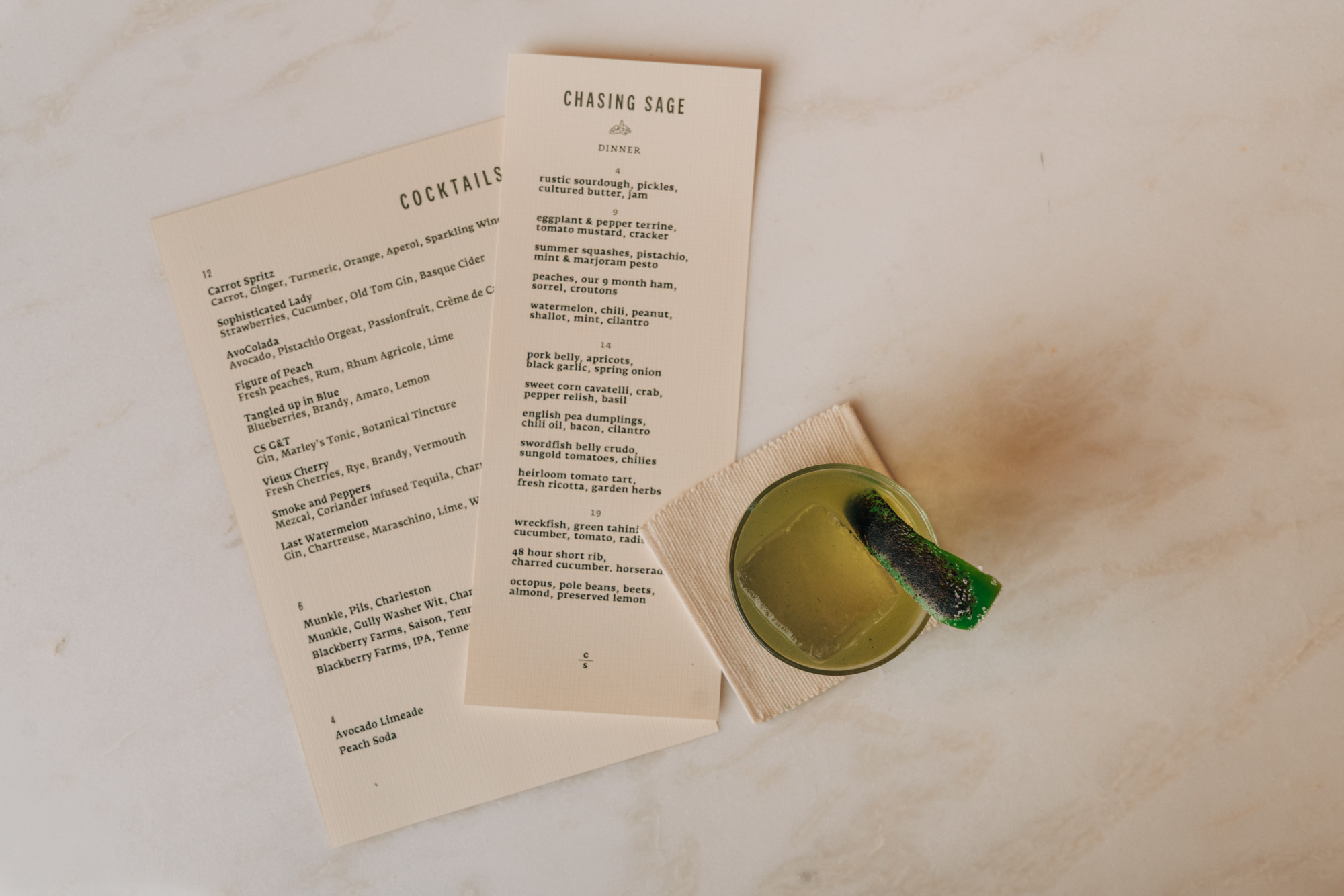
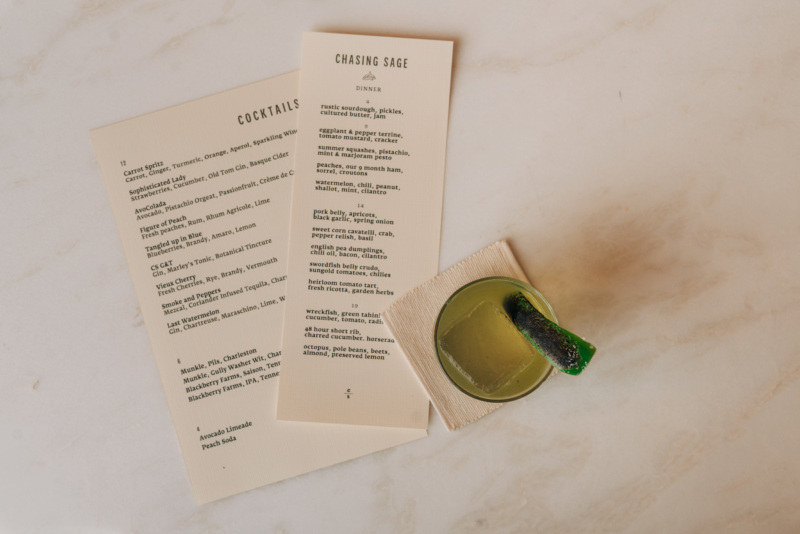
4. Food and drink played a part in the building’s story too.
Situated at the intersection of Rutledge and Line Streets, the building that now houses Chasing Sage has an interesting past. Originally built in 1892, it began life as a series of grocery stores, before turning into an underground jazz club. After that closed, the building sat unoccupied for about 30 years, until the teams at Basic Projects and Chasing Sage took over.
Many elements of the building’s past have been preserved and reimagined for its new life. Along the right wall you’ll see high shelving, an homage to the building’s original grocery store roots, now displaying a broad selection of wines. In addition, wood from the original building has been repurposed to create the bar area — look closely, and you’ll spy a photo of the interior of the grocery store that once occupied the space.

